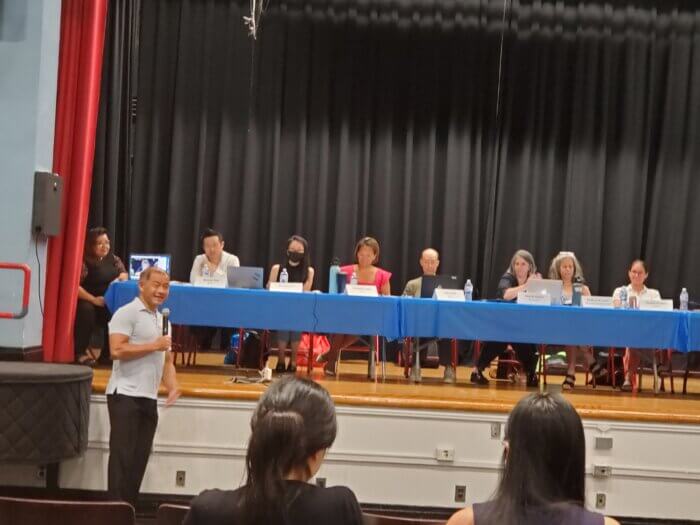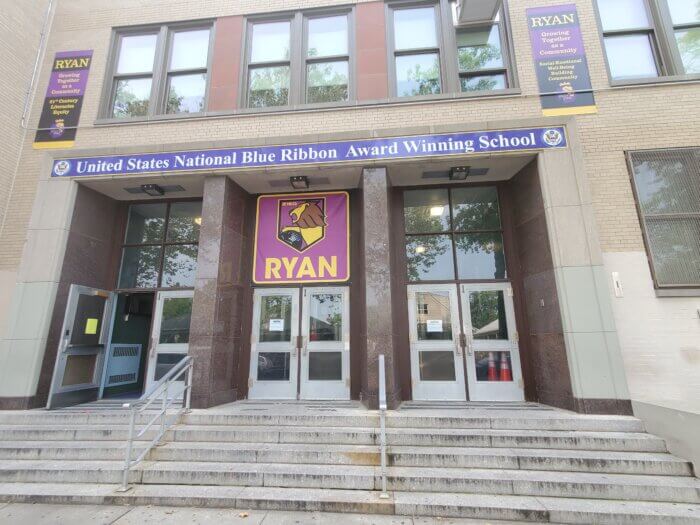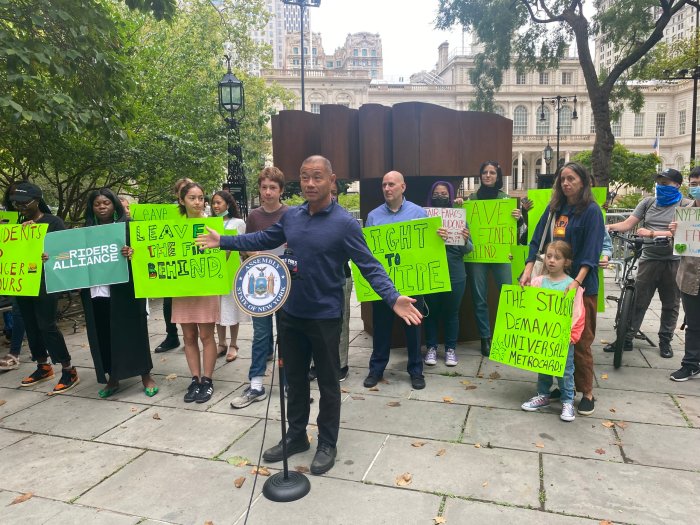Aside from hosting its annual election of officers, Community Education Council (CEC) 26 discussed a variety of topics during its July 13 meeting at M.S. 74Q.
Members went over class size reduction bill, a review of a letter intended for the DOT Commissioner and a proposed resolution related to the school admission process. The meeting also marked the first to be held in person since before the start of the COVID-19 pandemic.
The positions filled were the president, first and second vice presidents, recording secretary and treasurer. Al Suhu was retained as CEC 26 president. Cassandra Louie was elected first vice president. Sae jung Lee was elected second vice president. Dennis Chan, who had previously served as the treasurer, was elected recording secretary. Hsuante Tsai was elected treasurer.
On hand at the meeting was state Senator John Liu, who congratulated the elected officers. In addition to this, he discussed the class size reduction bill and how it may affect the schools CEC 26 oversees. He emphasized that the bill was not an “unfunded mandate.”

“We need to grow our schools and build more schools in order to alleviate the class sizes count to where they are acceptable,” Liu said. “Clearly, it’s going to be more money in order for us to reduce class sizes and provide all our kids with a sound basic education. That is precisely why the state Legislature has fully funded foundation aid for the first time.”
According to Liu, the Legislature has devoted more than $4 billion in additional annual aid to schools across New York state over the last few years. This includes $1.6 billion annually for schools in New York City. This brings the total annual foundation aid to $30 billion, including $13 billion in New York City.
Liu noted that schools which don’t comply with the class size mandate will lose state funding. The state education department is responsible for determining the amount of financial aid to give out. It is formula-driven and mandated by the New York State courts. After the courts first made the ruling in 2007 that students weren’t getting access to a sound basic education due to excessive class sizes, the Department of Education proposed to the state education department that classes have no more than 20 students from grades K-3, 23 students from fourth to eighth grade and 25 students from ninth to 12th grade. Liu included these mandates in his class size legislation.
NYC is getting $1.2B per year MORE to provide a sound, basic education and reduce class sizes over the next five years. Glad to hear @NYCSchools @DOEChancellor will be engaging principals and parents to get it done. pic.twitter.com/PQigWkAyxO
— John C. Liu (@LiuNewYork) February 9, 2023
“It is an absolute falsity for the city or anybody to call the class size mandate an unfunded mandate,” Liu said. “If the city does not comply with the class size mandate, it will risk losing state funding.”

Following the annual election and Liu’s comments, CEC 26 turned their attention over to a letter they intended to send to DOT Queens Borough Commissioner Nicole Garcia in regards to an application for the Open Streets Program at M.S. 216Q. With construction on a three-story addition to its schoolyard set to begin in October, the students won’t have anywhere to play during recess for the next three years. In order to give the students somewhere to play, the school administration is applying for the Open Streets program. In the letter from CEC 26, they voiced their support for this application. They also requested that the Department of Transportation expedite review of the application.

If the application is approved, the street adjacent to the school, 174th Street, will be closed during school hours. While some at Thursday’s meeting voiced concern over how this may impact those who live on the street, CEC 26 said only a portion of the street would be closed, with the part with homes remaining open for the residents to reach. Since reviewing the draft of the letter Thursday, CEC 26 has since sent it out.
The final main point of discussion during Thursday’s meeting related to a proposed resolution aimed at improving the use of random numbers for school admission placement. In the proposal, CEC 26 called upon NYC Schools Chancellor David Banks to have the Office of Student Enrollment alter the use of randomly assigned numbers to a form that would prioritize those in a descending order when it comes to placements and waitlists. Under this proposal, an ascending order would remain when it comes to the initial placement process.
This proposal is meant to better benefit those applying for admission to 3K, pre-K, kindergarten, middle school or high school who were unlucky enough to be randomly assigned a high number, placing them further back on the list.
“We want to partially counteract this injustice by reversing the order in which students are placed on the waiting list,” Suhu said. “Now, a bad lottery number would put them at the front of the line. We’re just trying to equalize the chances and give a better opportunity to those kids.”




































